- Home
- Steven Brust
Sethra Lavode (Viscount of Adrilankha)
Sethra Lavode (Viscount of Adrilankha) Read online
Sethra
Lavode
BOOKS BY STEVEN BRUST
THE DRAGAERAN NOVELS
Brokedown Palace
THE KHAAVREN ROMANCES
The Phoenix Guards
Five Hundred Years After
The Viscount of Adrilankha,
which comprises The Paths of the Dead,
The Lord of Castle Black, and Sethra Lavode
THE VLAD TALTOS NOVELS
Jhereg
Yendi
Teckla
Taltos
Phoenix
Athyra
Orca
Dragon
Issola
OTHER NOVELS
To Reign in Hell
The Sun, the Moon, and the Stars
Cowboy Feng’s Space Bar and Grille
The Gypsy (with Megan Lindholm)
Freedom and Necessity (with Emma Bull)
Sethra
Lavode
BOOK THREE OF THE VISCOUNT OF ADRILANKHA
STEVEN BRUST, P.J.F.
A TOM DOHERTY ASSOCIATES BOOK
NEW YORK
This is a work of fiction. All the characters and events portrayed in this novel are either fictitious or are used fictitiously.
SETHRA LAVODE: BOOK THREE OF THE VISCOUNT OF ADRILANKHA
Copyright © 2004 by Steven Brust
Afterword copyright © 2004 by John M. Ford
Edited by Teresa Nielsen Hayden
All rights reserved, including the right to reproduce this book, or portions thereof, in any form.
This book is printed on acid-free paper.
A Tor Book
Published by Tom Doherty Associates, LLC
175 Fifth Avenue
New York, NY 10010
www.tor.com
Tor® is a registered trademark of Tom Doherty Associates, LLC.
Library of Congress Cataloging-in-Publication Data
Brust, Steven, 1955—
Sethra Lavode / Steven Brust.—1st ed.
p. cm.—(The Viscount of Adrilankha ; bk. 3)
“A Tom Doherty Associates book.”
ISBN 0-312-85581-8 (acid-free paper)
EAN 978-0312-85581-9
I. Title
PS3552.R84S47 2004
2003063454
First Edition: April 2004
Printed in the United States of America
0 9 8 7 6 5 4 3 2 1
The Viscount of
Adrilankha
BOOK THREE
Sethra Lavode
Describing Certain Events that Occurred
Between the 1st and 3rd Years
Of the Reign of Empress Zerika the Fourth
Submitted to the Imperial Library
By Springsign Manor
House of the Hawk
On this 3rd day of the Month of the Athyra
Of the Year of the Vallista
Of the Turn of the Jhereg
Of the Phase of the Phoenix
Of the Reign of the Dragon
In the Cycle of the Phoenix
In the Great Cycle of the Dragon;
Or, in the 179th Year
Of the Glorious Reign
Of the Empress Norathar the Second
By Sir Paarfi of Roundwood
House of the Hawk
(His Arms, Seal, Lineage Block)
Presented, as Always,
To Marchioness Poorborn
With Gratitude and Affection
Cast of Characters
Blackchapel and Castle Black
Morrolan—An Apprentice witch
Erik—A fool
Miska—A coachman
Arra—A Priestess
Teldra—An Issola
Fentor e’Mondaar—A Dragonlord
Fineol—A Vallista from Nacine
Oidwa—A Tsalmoth
Esteban—An Eastern witch
The Kanefthali Mountains
Skinter—A Count, afterward Duke
Marchioness of Habil—His cousin and strategist
Betraan e’Lanya—His tactician
Tsanaali—A lieutenant in Skinter’s army
Izak—A general in Skinter’s army
Brawre—A general in Skinter’s army
Saakrew—An officer in Skinter’s army
Udaar—An adviser and diplomatist
Hirtrinkneff—His assistant
The Society of the Porker Poker
Piro—The Viscount of Adrilankha
Lewchin—An Issola
Shant—A Dzurlord
Zivra—House unknown
Whitecrest and Environs
Daro—The Countess of Whitecrest
Khaavren—Her husband
Lar—A lackey
Cook—A cook
Maid—A maid
Dzur Mountain and Environs
Kytraan—The son of an old friend
Sethra Lavode—The Enchantress of Dzur Mountain
Tukko—Sethra’s servant
Sethra the Younger—Sethra’s apprentice
The Necromancer—A demon
Tazendra—A Dzurlord wizard
Mica—Her lackey
The Sorceress in Green—A sorceress
Berigner—A general serving Sethra Lavode
Taasra—A brigadier serving under Berigner
Karla e’Baritt—A military engineer
Arylle and Environs
Aerich Temma—Duke of Arylle
Fawnd—His servant
Steward—His other servant
On the Road
Orlaan/Grita—A sorceress in training
Wadre—A brigand leader
Mora—His lieutenant
Grassfog—A bandit
Iatha—A bandit
Thong—A bandit
Ritt—A bandit
Belly—A bandit
Ryunac e’Terics—A lieutenant in Skinter’s army
Magra e’Lanya—Ryunac’s sergeant
Brimford—An Easterner and Warlock
Tsani—Grassfog’s sister
Tevna—A pyrologist
Elde Island
Corthina Fi Dalcalda—King of Elde
Tresh—An exile
Nywak—Her servant
Gardimma—Imperial Ambassador to Elde
The Halls of Judgment
Barlen
Verra
Moranthë
Kéurana
Ordwynac
Nyssa
Kelchor
Trout
Tri’nagore
Miscellaneous Others
Sennya—Dzur Heir
Ibronka—Her daughter
Clari—Ibronka’s maid
Röaanac—A Tiassa
Malyapon—His wife
Röaana—Their daughter
Haro—Their servant
Prince Tiawall—Hawk Heir
Ritsak—Lyorn Heir
Jami—A Teckla in Mistyvale County
Marel—Proprietor of a general store
Contents
Preface
BOOK FIVE
Chapter the Sixty-Ninth
Chapter the Seventieth
Chapter the Seventy-First
Chapter the Seventy-Second
Chapter the Seventy-Third
Chapter the Seventy-Fourth
Chapter the Seventy-Fifth
Chapter the Seventy-Sixth
Chapter the Seventy-Seventh
Chapter the Seventy-Eighth
Chapter the Seventy-Ninth
Chapter the Eightieth
Chapter the Eighty-First
Chapter the Eighty-Second
Chapter the Eighty-Third
Chapter the Eighty-Fourth
Chapter the Eighty-Fifth
BOOK SIX
Chapter the Eighty-Sixth
Chapter the Eighty-Seventh
Chapter the Eighty-Eighth
Chapter the Eighty-Ninth
Chapter the Ninetieth
Chapter the Ninety-First
Chapter the Ninety-Second
Chapter the Ninety-Third
Chapter the Ninety-Fourth
Chapter the Ninety-Fifth
Chapter the Ninety-Sixth
Chapter the Ninety-Seventh
Chapter the Ninety-Eighth
Chapter the Ninety-Ninth
Chapter the One Hundredth
Chapter the One Hundred First
Chapter the One Hundred Second
Epilogue
Conclusion
Afterword ENCOUNTERS WITH PAARFI AND THE GODS
Preface
Which Consists of a Succinct Summary
Of All That Has Gone Before
As Well as a Daring Literary Adventure
Embarked Upon for the Benefit
Of the Loyal Reader
Having, on the occasion of introducing the previous volume of this history, said all that needs to be said concerning the wisdom, or, rather, the lack of wisdom, of dividing a story into sections, we do not feel the need to repeat ourselves. That is, all of those who have read the previous volume understand our objections to making such necessarily arbitrary breaks in what was meant to be a single, unified text; and those who have not read the previous volumes will, without our having to say anything, quickly come to understand. However, in the course of preparing this summary, we came to the decision to do something that, so far as we know, has never been done in the history of letters—a daring step that we have chosen to take out of a sense of duty to the reader.
Instead of confining these few pages to an explication of the events which are already known to those of our readers who have done us the courtesy of remaining with us throughout the several volumes of this history, we have chosen to break with an iron-bound tradition for such summaries, and include, toward the end of this section, new information—that is to say, information which will be of value to all readers.
It is possible that we will come under attack for such a departure from tradition from our brothers in letters, as well as those who feed upon literature in the same way as certain insects feed upon deceased animals; but in our desire to be of service to the reader, we are willing and even happy to brave these attacks.
That noted, we will at once pass on to explain, as laconically as possible, the circumstances at the beginning of this volume of our history, and how those circumstances developed.
We have been following, first of all, two Dragonlords: Morrolan and Kâna. The latter of these has been attempting to expand his own holdings until they become, in effect, the Empire re-created. He achieved significant success, having started his projects around the fiftieth year after Adron’s Disaster, so that, by the time two hundreds of years had passed, nearly half of the area that was once the Empire was either under his control or threatened by his forces.
The other, Morrolan, the Count of Southmoor, had been raised in the East in ignorance, not only of his heritage, but, indeed, even of his race. Early in our history, we saw how he migrated from the East along with several hundreds of practitioners of the Eastern heathen magical arts. He journied to Dzur Mountain under the impression that he was owed tribute, Dzur Mountain being part of his ancestral holdings. He received an immensely powerful artifact from the Enchantress, though we are inclined to believe this was less in the nature of tribute than it was a gift of friendship, or perhaps the product of inspired foresight on the part of the enigmatic Sethra.
Another figure whom we have been following with great attention is, in fact, Sethra Lavode herself, the Enchantress of Dzur Mountain. Seeing that the true Phoenix Heir, Zerika, had reached a sufficient age, Sethra revealed to this worthy Zerika’s true name and destiny, and sent her, with the Viscount of Adrilankha, our old friend Tazendra, and a few others to the Paths of the Dead, where she managed to convince the Lords of Judgment to give her the Orb. She emerged from the Halls of Judgment, and so the Interregnum came to an end. This, the reader should understand, led directly to the Battle of Dzur Mountain, as this battle was, above all else, Kâna’s attempt to take the Orb by force. He concentrated his two armies, together numbering over seventy thousand strong, on Dzur Mountain, which he knew was Zerika’s destination. The attempt was defeated, largely thanks to Morrolan, as well as to assistance sent by Sethra Lavode, and a necromantic demon sent by the Lords of Judgment.
We should add that, after the battle, Morrolan caused to be built a floating castle, as was a tradition among his family, which had often lived in such structures before the Interregnum, either because of the ease of defending such a place, or else simply because they were able to.
With Kâna’s army defeated and in retreat, Zerika marched from Dzur Mountain to Adrilankha and began construction of the Imperial Palace, unaware that the Pretender had other schemes working in case the military attack had failed. In particular, Grita, the daughter of our friends’ old enemy, has offered her services to Kâna in exchange for help in achieving vengeance against Khaavren, Aerich, Pel, and Tazendra. She has been of no small help to the Pretender, in particular succeeding in finding Illista, an exiled Phoenix who has long nursed a hatred of our friends, and who, like Grita, is happy to assist Kâna in exchange for securing her revenge.
We have mentioned Piro, the Viscount of Adrilankha. It is also important for the reader to understand that he has fallen in love with the Dzurlord Ibronka, only daughter of Her Highness Sennya, the Dzur Heir. Khaavren, for his part, was outraged at Piro’s wishes to marry outside of his House, and, after harsh words between them, Piro, Ibronka, and their friends, including the remnants of a certain band of brigands who had first been enemies and after soldiers of Her Majesty, have set up as highwaymen in a region some hundred miles northwest of Dzur Mountain.
With the reader’s permission, we feel that, as we promised above, this is a good time to present new information: to wit, a general picture of what was occurring in the Empire during this crucial period, that is to say, what is usually considered the initial year of Zerika’s Reign.
The reader should, first of all, understand that a confederation as strong and as large as that created by Kâna and Habil would not simply dissolve as the result of a military defeat or two. Though severely damaged, like a wounded toe-lizard, it thrashed around a bit, pulled its head in, retreated, hissed, and survived. By the time several months had passed, Kâna had pulled back so that he could reasonably claim to exercise his influence over the western third of the Empire, with the exception of the Fingers, which, except for its few ports, was of little importance anyway. Additionally, certain pockets above the Great Sea of Amorphia claimed allegiance to the Pretender, but this is generally considered to be a fluke, caused by age-old resentment against a previous Phoenix Emperor who took mining rights from various of the counts of the district.
While the geographical regions of support for the two supposed Emperors are clearly identifiable, the breakdown among the various strata of society is less clear. Zerika’s support was strongest among the Lyorn, Tiassa, and Hawk nobles, a statistic that would seem irrational, as these Houses stood to gain the Orb sooner with a Dragon on the throne. Yet Lyorns have always held that the Orb was sacred, and, in such questions, the Tiassas have more often than not followed the Lyorns’ lead. As for the Hawklords, many of them had interest in some of the iron-rich regions of the Southeast, and, as most of the smelters were near the Shallow Sea—that is to say, a region firmly under Zerika’s control—they hesitated to offend her.
The House of the Dragon was, as the reader might expect, split, primarily according to family ties of those serving in the various armies, and secondarily according to other interests; but for the most part, they tended to support Kâna, because he was, after all, a
Dragon himself. Most of the Dzurlords also sided with the Pretender, because so many of their holdings were near the Grand Canal and dependent upon it, and nearly the entire length of the Canal ran through the region firmly under his control.
We should note here that, as the reader may observe, it is, in fact, the influence of commerce, trade, and the practical considerations of day-to-day life that tended to exert the most influence on the loyalties and allegiances of the Houses, not high-sounding considerations of ideals, such as is believed by historians of the romantic school. Yet, to give credit to those historians, it is often those individuals who form exceptions to these tendencies who exert the most influence on the course of history, and are, in any case, the most pleasurable to study.
But to continue: Additional support for Zerika came from the Iorich, because most of them tend to live in cities, and, as a general rule, her support was stronger among those whose income depended upon the sort of manufacturing that was transported by sea, whereas Kâna had considerable sympathy among those who depended upon overland transportation, such as the Athyra (many of whom had logging interests in the region to the west of the Pushta) as well as the Chreotha and Vallista. Of the Orca, those involved directly in shipping firmly backed Zerika, who controlled the most important seaports (not the least of which was proud Adrilankha herself), but the rest—which is to say, the majority—favored Kâna for the same reason as the Chreotha and Vallista: because he controlled so much of the interior transportation.
In many ways, transportation, as the reader may see, was a key issue; at least, it seemed so to Her Majesty. She was never ashamed to say, later, that she had studied many of the improvements instituted by the Pretender and had learned from them. She immediately implemented and extended his system of posts, which included the delivery of mails and use of post horses by any peer, as well as those on Imperial business. While this was not tremendously successful as a means of garnering support among the more recalcitrant nobles, it quickly turned into a more general system for the delivery of mail, until we have the liberal, inexpensive, and efficient system that we enjoy to-day.
One of the more daring (and controversial) decisions of Zerika’s early reign was that, while she maintained the army, she did not increase it, instead devoting what funds she was able to garner from those nobles who pledged loyalty to her as individuals (decisions on approval by the Houses and the Council of Princes still being some years in the future) to the improvement of roadways, hoping to lure in this fashion more of the merchants.

 Phoenix
Phoenix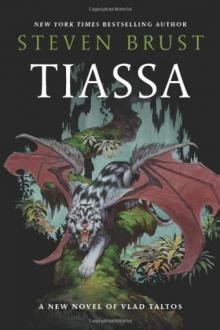 Tiassa
Tiassa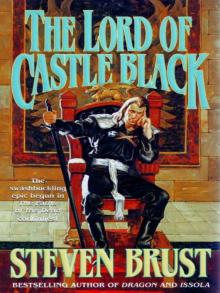 The Lord of Castle Black
The Lord of Castle Black To Reign in Hell: A Novel
To Reign in Hell: A Novel Five Hundred Years After (Phoenix Guards)
Five Hundred Years After (Phoenix Guards) The Book of Dzur: Dzur ; Jhegaala
The Book of Dzur: Dzur ; Jhegaala The Paths of the Dead
The Paths of the Dead Jhegaala
Jhegaala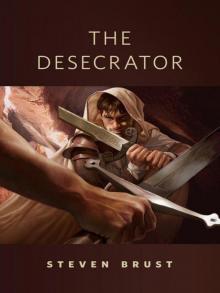 The Desecrator: A Tor.com Original
The Desecrator: A Tor.com Original Agyar
Agyar Fireworks in the Rain
Fireworks in the Rain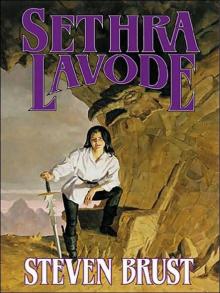 Sethra Lavode
Sethra Lavode The Book of Athyra
The Book of Athyra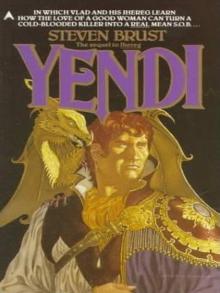 Yendi
Yendi Good Guys
Good Guys The Book of Jhereg
The Book of Jhereg Cowboy Feng's Space Bar and Grille
Cowboy Feng's Space Bar and Grille Sethra Lavode (Viscount of Adrilankha)
Sethra Lavode (Viscount of Adrilankha) My Own Kind of Freedom
My Own Kind of Freedom Dzur (Vlad Taltos)
Dzur (Vlad Taltos)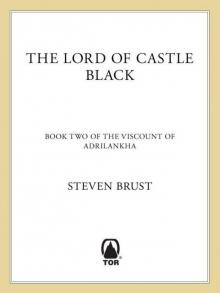 The Lord of Castle Black: Book Two of the Viscount of Adrilankha
The Lord of Castle Black: Book Two of the Viscount of Adrilankha Fireworks in the Rain: A Tor.Com Original
Fireworks in the Rain: A Tor.Com Original To Reign In Hell
To Reign In Hell Issola
Issola Orca
Orca Issola (Vlad Taltos)
Issola (Vlad Taltos)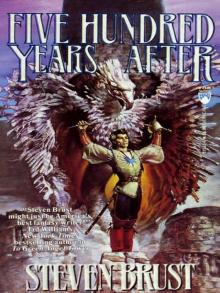 Five Hundred Years After
Five Hundred Years After The Phoenix Guards
The Phoenix Guards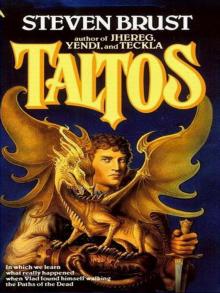 Taltos
Taltos![[Vlad Taltos 06] Athyra Read online](http://i1.bookreadfree.com/i1/03/24/[vlad_taltos_06]_athyra_preview.jpg) [Vlad Taltos 06] Athyra
[Vlad Taltos 06] Athyra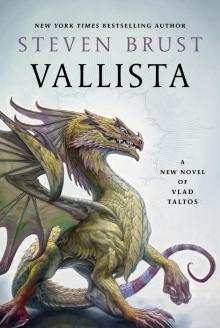 Vallista--A Novel of Vlad Taltos
Vallista--A Novel of Vlad Taltos The Incrementalists
The Incrementalists![[Vlad Taltos 04] Taltos Read online](http://i1.bookreadfree.com/i/03/24/[vlad_taltos_04]_taltos_preview.jpg) [Vlad Taltos 04] Taltos
[Vlad Taltos 04] Taltos![[Vlad Taltos 03] Teckla (v 1.1) Read online](http://i1.bookreadfree.com/i1/03/27/[vlad_taltos_03]_teckla_v_1_1_preview.jpg) [Vlad Taltos 03] Teckla (v 1.1)
[Vlad Taltos 03] Teckla (v 1.1)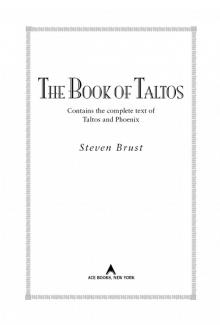 The Book of Taltos
The Book of Taltos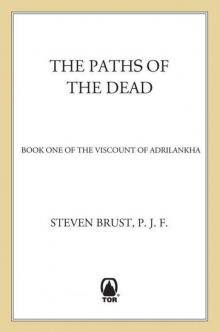 The Paths of the Dead (Viscount of Adrilankha)
The Paths of the Dead (Viscount of Adrilankha) Jhegaala (Vlad Taltos)
Jhegaala (Vlad Taltos)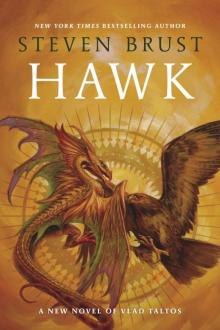 Hawk (Vlad)
Hawk (Vlad) Iorich
Iorich The Skill of Our Hands--A Novel
The Skill of Our Hands--A Novel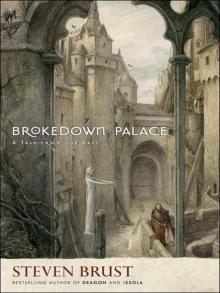 Brokedown Palace
Brokedown Palace Dragon (Vlad Taltos)
Dragon (Vlad Taltos) Dragon
Dragon Athyra
Athyra Teckla
Teckla Dzur
Dzur